Water, air, and food are the most important natural resources to people. Humans can live for only a few minutes without oxygen, less than a week without water, and about a month without food. We need water to breathe and grow food. All living things not only need water, but are mostly made up of water. However, a lot of the water on the Earth is ocean water, which is too salty to drink or to use to farm. One of the most important things we need to do is get clean water to all people. Thankfully, we can make more water and it is hard to destroy water. Even so, there are many places that don't have enough water because we are using too much of it and we are making a lot of the water we could use too dirty to use. As a result, many people do not have enough water to drink or stay healthy, which can cause people all over the world to die.
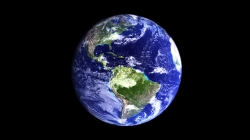
They don't call Earth the "Blue Planet" for nothing!
Kevin Gill from Nashua, NH, United States, CC BY-SA 2.0 , via Wikimedia Commons
Water CycleWater is the only thing on Earth that can be found naturally as a solid, liquid, or gas. On the Earth, we have water on the surface, like in rivers. We also have water in cold places, as ice caps. We also have water as a gas in the air. We can store our water in many places. Some of these places, like the ocean, have too much salt, and other places, like Antarctica, are too hard to get to. The hydrosphere
is the area of Earth where water is moved and stored. The water that we can get to and use easily is in rivers and lakes, but that only makes up a very small part of all of the water in the world. Most of the living things on Earth need water, but there is only a very small percent of water free for them to use. People are always looking for ways to get more fresh, clean water.

The hydrosphere is the area of Earth where water is moved and stored.
avocadogirlfriend at Flickr.com
The water cycle is how water moves from lakes and oceans, to a gas in the air, and back to the Earth in the form of rain. There are many steps in the water cycle.
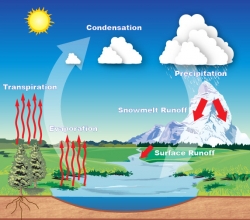
The Hydrological Cycle
NOAA
When the sun heats up water, it can cause a couple of things to happen. One is
evaporation, or when liquid water turns to gas, sometimes caused by the heat of the sun. This water goes into the air and becomes clouds. Another is
sublimation, or when solid water (ice) turns to gas without becoming a liquid. When a lot of water goes into the air, it can turn into a cloud and then fall back to the Earth as
precipitation, or liquid water returning to the surface as rain or snow. When the rain or snow comes back to Earth it can either turn back into a gas, go back into the ground, or flow onto the Earth. When this happens, it is called
surface runoff. This is the flow of fresh water over land, either from rain or melting ice.
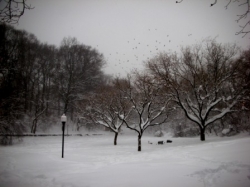
Snow is a form of precipitation.
GuyDeckerStudio at Flickr.com
In more places, rain hits plants before it gets into the soil. A lot of this water will turn back into a gas, but some water will go to the soil and move into the ground to be sucked up into plant roots. The plants will use a lot this water, but a lot of it will go back into the air after they suck it up. This is called
transpiration, when water moves through a plant to be used for its own metabolism, and is let out into the air as a gas.
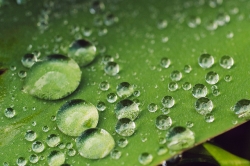
Water is essential plants, which have adapted to take water from the ground by the roots and move it through the organism.
Yutaka Seki
The water in the soil that is not taken up by a plant or turned into a gas can go deep into the soil, where it becomes
groundwater. This kind of water is found in between dirt, sand, gravel, and rocks. This is very important fresh water for people, plants, and animals.
Aquifers, or large rocks that can store water under Earth, are brought up by wells for us to drink. We need to make sure we aren't using this water up faster than it is falling down as rain.
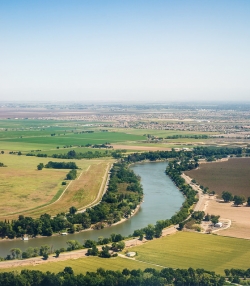
In countless cases, sources of freshwater are being depleted faster than they are being replenished by water from precipitation.
U.S. Department of AgricultureLance Cheung, Public domain, via Wikimedia Commons